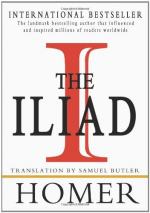|
This section contains 7,658 words (approx. 26 pages at 300 words per page) |

|
SOURCE: Morrison, James V. “Thematic Inversion in the Iliad: The Greeks under Siege.” Greek, Roman, and Byzantine Studies 35, no. 3 (autumn 1994): 209-27.
In the following essay, Morrison stresses the thematic significance of role reversal in the middle portion of the Iliad, in which the Greek camp is depicted as a city under Trojan siege.
In the central books of Homer's Iliad, the Greeks come under Trojan attack. In Book 12 the Greek camp is assaulted; in Books 15 and 16 Hector threatens to burn the Greek fleet. With its walls and defenses, the Greek camp is in many ways like a city (polis), as previous commentators have noted.1 I would like to make the stronger claim that the poet of the Iliad deliberately promotes the idea that the Greek camp—once under attack—should be thought of as a city under siege. The effect is to reverse the rôles traditionally assigned...
|
This section contains 7,658 words (approx. 26 pages at 300 words per page) |

|


